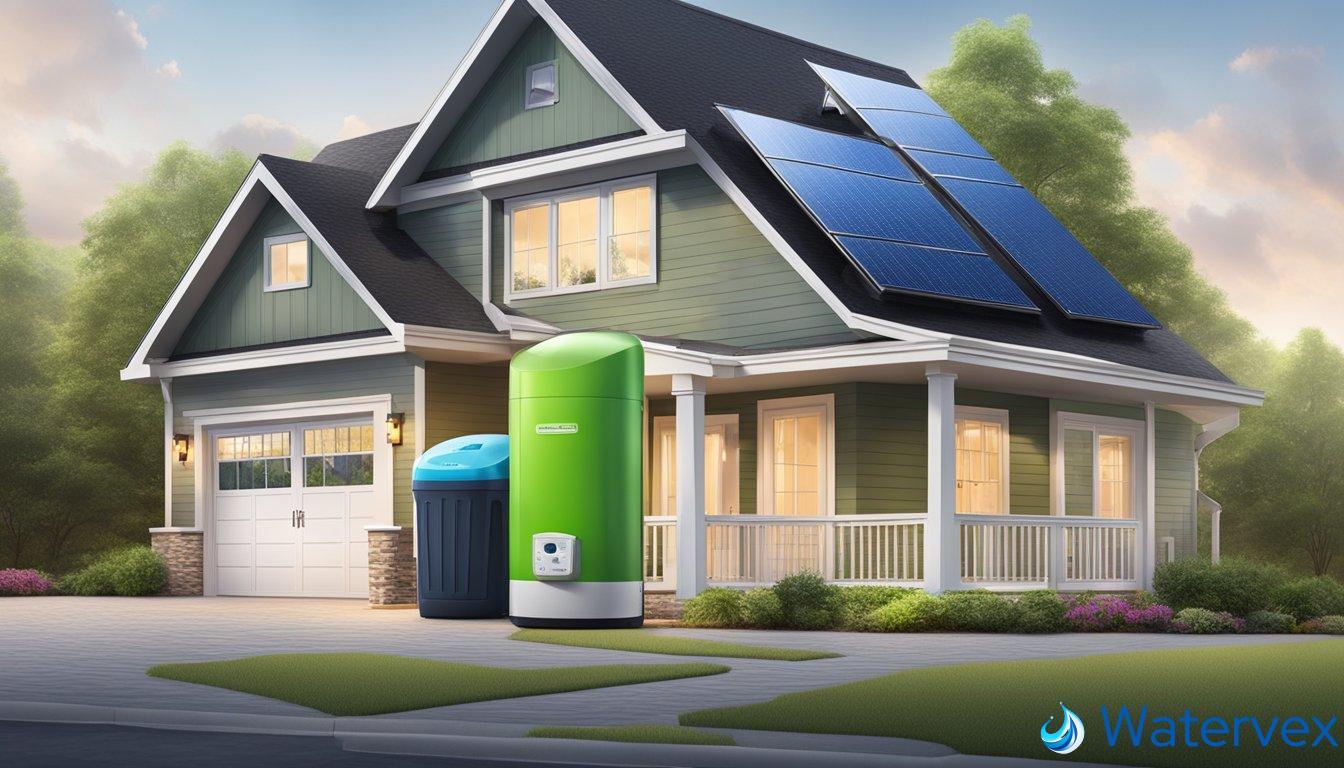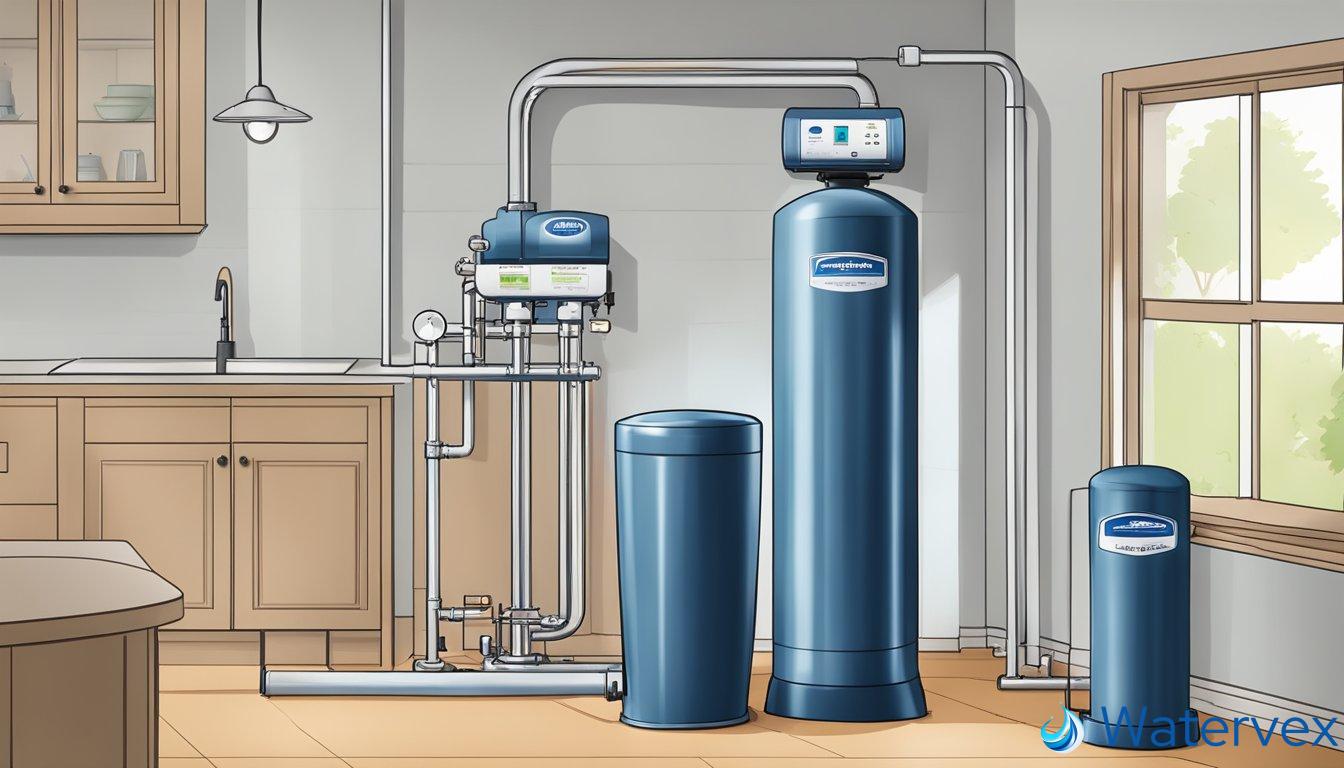For many homeowners, optimizing for energy efficiency is both a cost-saving and environmentally conscious decision. When it comes to home improvements, energy tax credits can offer significant savings, but not all upgrades qualify. If you’re considering installing a water softener, you might wonder if this improvement can help you tap into the savings that come with energy tax credits. Water softeners provide numerous benefits, such as preventing mineral buildup in pipes and appliances, which can improve efficiency; however, the connection between water softeners and energy credits is not immediately clear.

Understanding which products qualify for energy tax credits like the Energy Efficient Home Improvement Credit or the Residential Clean Energy Credit requires sifting through the specifics of tax legislation. These credits are typically geared towards products that directly impact energy consumption within the home, such as clean energy systems or specific energy-saving renovations. Since energy tax credits are structured to promote significant energy efficiency improvements, it’s crucial to evaluate whether a water softener system meets the criteria set by these programs.
Navigating the qualifications for these incentives can be a complex process, but armed with the right information, you can make informed decisions about your home improvements. Keep in mind that while some devices that increase the efficiency of water heating or usage might apply under broader improvements, it’s essential to verify the latest tax code or consult a tax professional to understand current deductions and credits.
Key Takeaways
- Water softeners may contribute to household efficiency, but don’t directly qualify for most energy tax credits.
- Investigate the specific criteria of tax credits like the Energy Efficient Home Improvement Credit.
- Consult up-to-date resources or tax professionals to fully understand entitlements for energy tax credits.
Eligibility for Energy Tax Credits

When exploring the potential for tax incentives related to making your home more energy-efficient, understanding the types of projects that qualify is crucial. Let’s specifically look into whether a water softener system can earn you a tax break.
Determining Eligibility for Water Softener Tax Credit
To identify if your water softener falls under the umbrella for an energy tax credit, you’ll need to evaluate if it contributes to substantial energy efficiency improvements in your home. Typically, water softening equipment is not included in energy tax credit programs because these systems do not directly impact the energy use of your home. For products to be eligible, they often need to be tied to energy production, like solar panels, or energy savings, such as insulation and windows that improve the insulation of your home.
Types of Energy Tax Credits Available to Homeowners
Energy tax credits are your ally in offsetting the costs related to energy-efficient home upgrades. They comprise the nonbusiness energy property credit and the residential energy efficient property credit. Most equipment falls into one of these categories:
- Renewable Energy Equipment: Includes solar electric systems, solar water heaters, small wind turbines, and geothermal heat pumps.
- Energy Efficiency Improvements: Eligible items can include insulation materials, exterior doors, windows, and skylights, as well as certain high-efficiency heating and cooling systems.
To apply for these credits, you would typically use Form 5695 when filing your tax return. Remember, items like biomass stoves, air conditioning systems, and boilers should have a Manufacturer’s Certification Statement to confirm their eligibility.
Unfortunately, as water softeners do not fall into a category that influences the home’s thermal envelope or the generation of renewable energy, they are not included in the available tax credits listed. This is quite specific, so always validate your particular situation since tax incentives can change, and new programs, like those stemming from the Inflation Reduction Act of 2022, may offer different opportunities.
While water softeners are important for maintaining the quality of your water and preventing mineral build-up in your pipes and appliances, they aren’t recognized as an energy-saving investment in the context of federal tax credits. If you’re considering a water softener for your home, research other benefits and savings it might provide, such as reduced soap usage and longer appliance lifespans, even though they might not reduce your tax bill.
How to Apply for Energy Tax Credits

When seeking energy tax credits, it’s essential to follow a straightforward process. This will ensure that your expenses in energy-efficient home improvements, potentially including water softeners, are recognized by the IRS.
Gathering Necessary Documentation
Before you can claim an energy tax credit, assemble all receipts and certifications related to your energy improvements. If you’re a property owner, this includes contracts, and Manufacturer’s Certification Statements, alongside your Employer Identification Number (EIN) if you’re applying as a landlord.
Filling Out Tax Forms Correctly
Use Form 5695, “Residential Energy Credits,” to detail the types of improvements made and their costs. You’ll then transfer the calculated credit from this form to your tax return. Remember, these credits are nonrefundable, which means they can reduce your tax liability but not result in a refund.
Understanding Qualifying Costs
Distinguish between cost-effective upgrades and those that are not eligible for credits. While the initial cost can be substantial, the long-term benefits in energy efficiency could outweigh these. However, make sure the costs align with what’s considered qualifying by the IRS for a credit claim.
Maximizing Benefits from Energy Tax Credits

In pursuit of greater energy efficiency, the Energy Tax Credits present a valuable opportunity for homeowners like you to make cost-saving home improvements. Understanding the nuances can unlock a sizable return on investment while contributing to environmental conservation.
Taking Advantage of Rebates and Incentives
Rebates and Incentives: Maximize cost savings by staying informed about the latest rebates and incentives. Check if your energy-efficiency improvements are eligible for a credit of up to $1,200 per year. This includes investments in your home’s energy envelope—insulation, windows, doors—and high-efficiency heating and cooling systems. Second homes and vacation homes may not qualify, as credits often apply only to your primary residence.
- Home Energy Audits: Consider a professional audit to identify potential improvements.
- Local Utilities: Local utilities may offer additional rebates that complement federal tax credits.
- State-Specific Credits: Some states offer their own incentives, which you can stack with federal credits for increased savings.
Frequently Asked Questions on Energy Credits
FAQs on energy credits serve to clarify doubts and provide deeper insights. Here are a couple of specifics:
- Primary vs. Secondary Residences: Credits for energy efficiency improvements are typically limited to your main home. Secondary or vacation properties usually do not qualify.
- Qualifying Improvements: Not all improvements are covered. While things like solar panels are eligible, a water softener alone does not usually qualify for an energy credit. Instead, focus on items that directly impact the energy consumption of your house, such as insulation or heating and cooling systems.
- Retroactive Claims: The energy tax credit can sometimes be claimed retroactively for eligible improvements made in the past.
Remember, each improvement must meet specific energy efficiency requirements to qualify, so ensure you have the correct documentation before filing your claim. Keep abreast of the United States federal policies as they can update, altering what qualifies for a tax credit.

